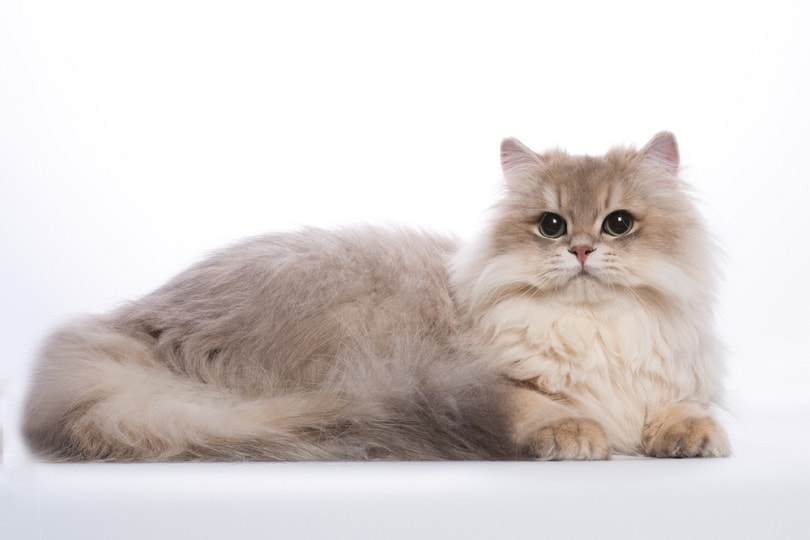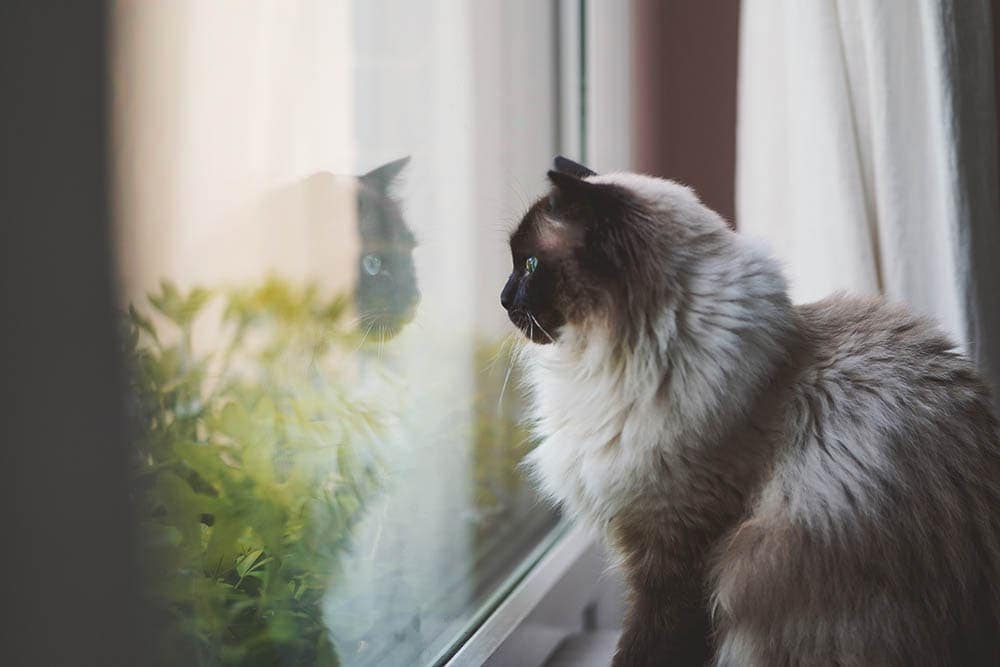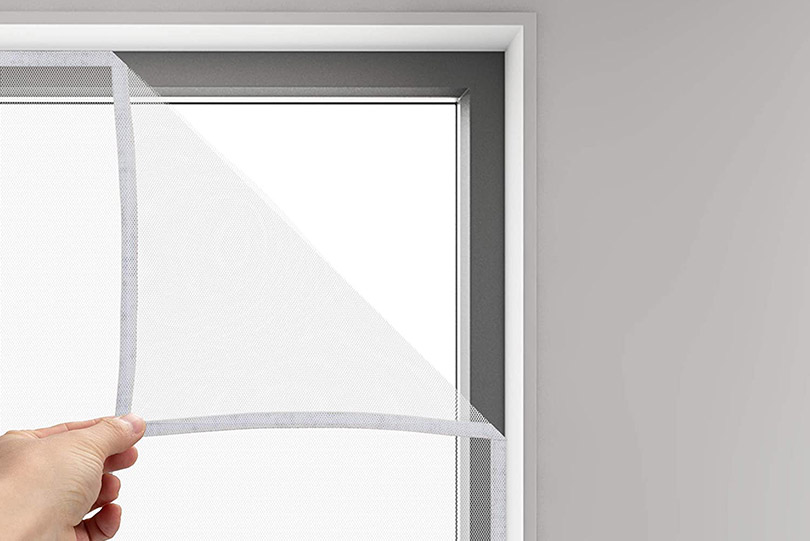Is My Cat Drinking Enough Water? Here’s What to Look For
Updated on
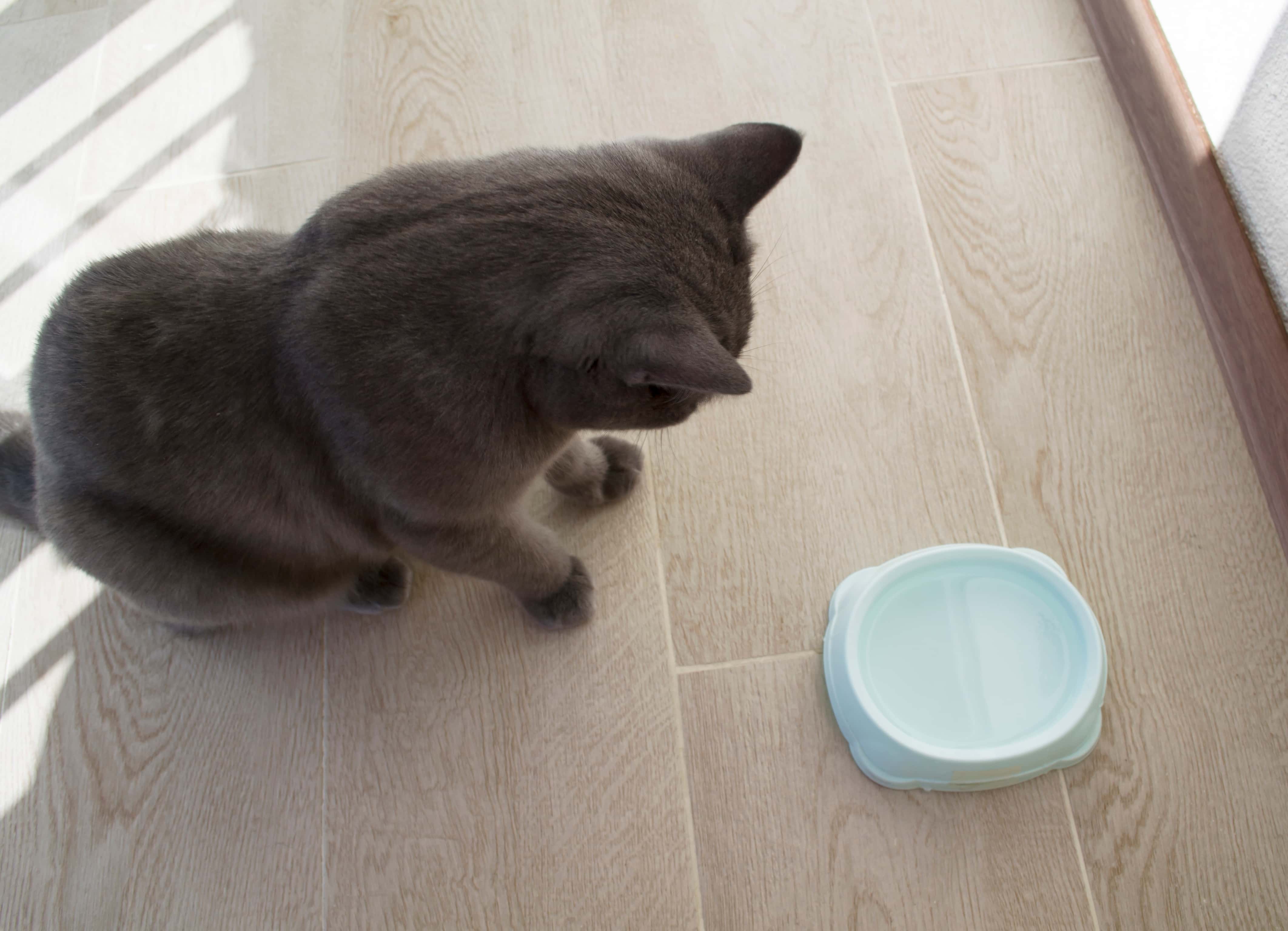
Click to Skip Ahead
Water is essential for life and just like us cats need to stay well hydrated to maintain their health. Although domestic cats are descended from the African wildcat and do have some characteristics that can help them conserve bodily fluid if necessary 1, it is essential that your cat has access to fresh, clean drinking water throughout the day to ensure they don’t become dehydrated. Cats require approximately 50 ml of water per kg of body weight daily.
Cats tend to drink small amounts of water at a time compared to some other pets like dogs and can be fussy about their water sources! You may be wondering how much water your cat should be drinking, how to tell if your cat is drinking enough water, and what the signs of dehydration are. We’ve got you covered! Here is all the information that you need to know.
Here’s How Much Water Your Cat Should Be Drinking Each Day
Cats require approximately 50 ml of water per kg of body weight daily. For an average 9 pound cat this equates to about 9 ounces of water. This water requirement can come from food as well and will be affected by activity levels, environmental temperature and underlying medical conditions. For example wet food contains up to 80% water and can provide much of the water that a cat needs during their day 2.
You can make sure your cat has enough water available to drink by keeping water bowls filled in a couple of places throughout your home, using a cat water fountain, and/or offering wet food as part of their overall diet.
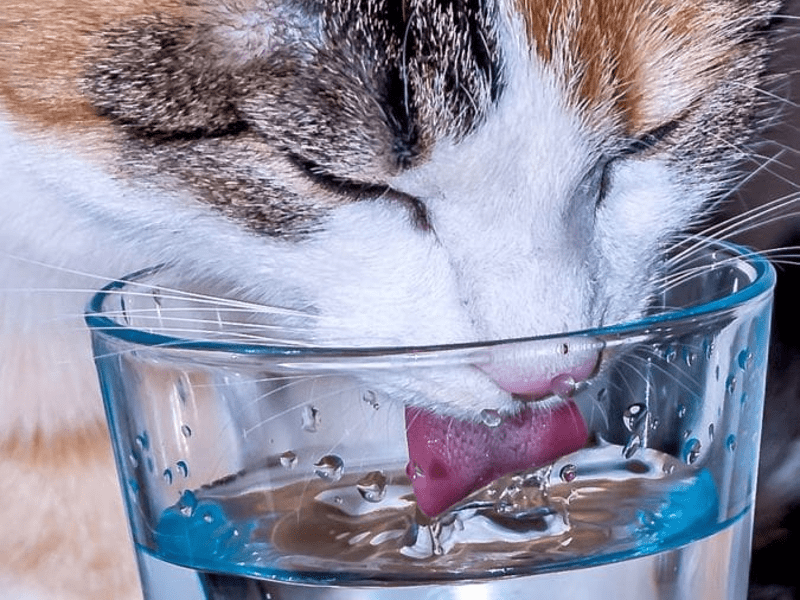
How to Know If Your Cat Is Drinking Enough Water Each Day
Unless you provide your cat with exactly the amount of water that they need each day and they drink it all, it can be hard to be sure that your cat is drinking enough water to satisfy their hydration needs. It’s important to remember that cats often drink water from other places than their water bowl such as other pet bowls, water glasses, faucets and rainwater if they go outdoors. Therefore, it’s not always a cause for concern if you don’t see your cat drinking often although you should always take note of any change in their drinking habits.
The best way to know that your cat is drinking enough water is to make sure you provide them with more than enough to consume, ensuring that their water is always fresh and clean, and looking for signs of illness or dehydration.
The Signs of Dehydration to Look Out For
Your cat will become dehydrated if more fluid is lost from their body than is taken in. This may be if they don’t have enough water to consume or it can be due to underlying health conditions.
- Loss of energy
- Disinterest in food and water
- Sunken eyes
- Dry and tacky gums
- Skin tenting- if you pinch your cat’s skin between their shoulder blades it should quickly return to its normal position when you let it go. If the skin stays in the tented position for a longer amount of time it can be a sign of dehydration.
If you notice any signs of these signs it’s essential to contact your vet straight away as well as ensuring you are providing enough water for consumption. If your pet is only mildly dehydrated and drinking water when offered, you may be able to monitor them at home. If they are showing more severe symptoms then veterinary treatment may be needed.

Reasons for Dehydration
Unfortunately, there could be an underlying problem for your cat’s dehydration other than simply not consuming enough fluids.
- Diabetes
- Kidney disease
- Fever
- Trauma
- Heatstroke
- Diarrhea and Vomiting
How to Encourage Your Cat to Drink More Water
Increasing the amount of wet food you feed your cat can improve their water intake.
- Regularly clean the water bowl and refill with fresh water
- Cats prefer not to drink near their food bowl or toileting area so keep the water bowl away from these areas in a quiet location.
- Provide more than one water source
- Cats usually prefer wide shallow bowls that don’t knock their sensitive whiskers when they drink.
- Providing your kitty with a source of running water like a water fountain may encourage them to intake more liquids.
What to Do If Your Cat Can’t Maintain Hydration
If you give your cat plenty of opportunities to consume water, including providing them with a source of running water and/or giving them wet food at mealtimes, and your cat still doesn’t maintain healthy hydration levels, you’ll need to schedule a consultation with a veterinarian. If problems like diabetes or kidney disease are at play, the longer your cat goes without treatment, the harder it will be to keep them hydrated, let alone healthy.

Final Comments
If you think that your cat is not drinking enough water during the day, you can take steps to encourage their water drinking. If there is an underlying condition, however, these attempts may prove futile. So, if there are any other signs of illness or your efforts are not proving successful, you should head to your vet clinic as soon as possible.
Featured Image Credit: Yuka Y, Shutterstock


